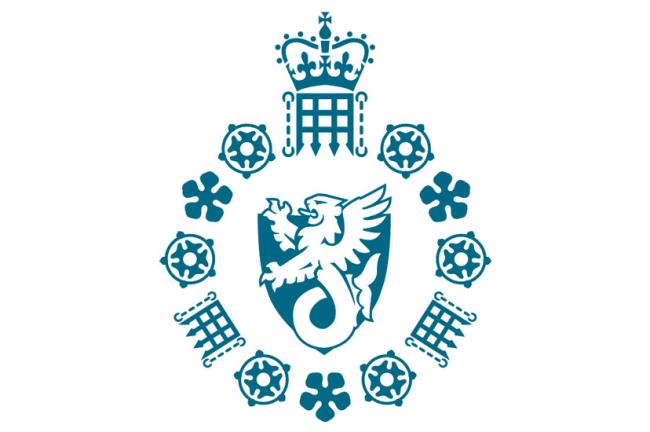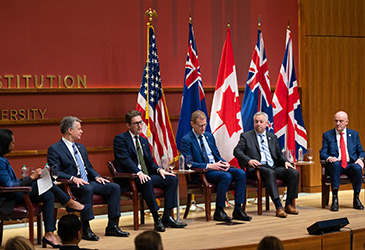
Pay gap report 2023
Foreword
MI5’s ability to protect the UK relies on us harnessing the talents of capable people from all backgrounds. Ensuring our workforce reflects the country we serve is both the right thing to do and the smart thing to do: it gives us access to a greater range of skills, perspectives, backgrounds and experience.
This year, we are for the first time including ethnicity pay gap figures in our report.
We are more diverse than many think. This report shows that almost 48 per cent of our people are women and nearly a quarter of all new joiners in the 2022/23 financial year were from an ethnic minority background.
Over the last year, there are several areas in which we have made progress: our median gender pay gap has reduced for the second year in a row, by 2.1 percentage points this year; more than half of our new recruits were women; and, as a result, female representation in the organisation continues on an upward trend.
But while there is much to be proud of, we know there is more work to do. We have launched several initiatives this year aimed at increasing the representation of women and people from an ethnic minority at all levels of MI5, and will continue to keep improving in order to keep the country safe.
MI5 Director General, Ken McCallum
Gender pay gap
Ordinary pay gap
Mean ordinary pay gap - 11.4%
2022: 11.4%
Median pay for male staff is 14.1% higher
2022: 16.2%
Based on data taken on 31 March 2023, MI5’s median pay for male staff is 14.1% higher than for women. This is a decrease from 2022. The mean ordinary pay gap has remained at 11.4%.
Pay Quartiles
Upper pay quartile
35.3% women, 64.7% men
Upper middle pay quartile
42.3% women, 57.7% men
Lower middle pay quartile
48.6% women, 51.4% men
Lower pay quartile
64.4% women, 35.6% men
As of 31 March 2023, our employee workforce comprises 47.7% women, up from 47.0% in 2022. In FY 2022/23, 56.9% of new joiners were women.
Increases of female representation in the upper and upper middle quartiles is likely to be the driving force behind our reduced pay gap.
Bonus pay gap
36.1% of women received a bonus
33.8% of men received a bonus
A refreshed reward scheme was launched in 2021/22, with a focus on rewarding outstanding performance by a more diverse range of staff.
As a result of staff bonuses being awarded at a flat rate, our median gender bonus pay gap is 0%. In addition, 36.1% of women received a bonus in FY 2022/23, compared to 33.8% of men. A recent push to recognise the vital contributions of our part-time staff, over 80% of whom are women, will have contributed to these figures.
Ethnicity pay gap
Ordinary pay gap
Mean ordinary pay gap - 9.3%
2022: 7.8%
Median pay for white staff is 12.3% higher
2022: 7%
Based on data taken on 31 March 2023, MI5’s median pay for white staff is 12.3% higher than for ethnic minority staff. This is an increase from 2022. The mean ordinary pay gap has also increased slightly, to 9.3%. In FY 2022/23, 22.9% of joiners were from an ethnic minority background. Generally new joiners to the organisation enter at lower grades meaning that while this was a record year for ethnic minority recruitment there has been a consequent impact on the ethnicity pay gap.
In line with new government guidance, we are publishing our median ethnicity pay gap broken down by ethnic group. We recognise that by doing so, we will be better able to understand and address the specific challenges faced by the ethnic groups represented in our organisation.
Pay gap by ethnic group
Asian - 12.9%
Black - 21.7%
Mixed - 10.1%
Other - 1.3%
Our analysis shows that in MI5, the pay gap for black staff is significantly higher than for any other ethnic group, at 21.7% (compared to the overall 12.3% pay gap). We are conducting further analysis and will act on these findings, and bring additional focus to the recruitment of new joiners of black heritage.
Pay quartiles
Upper pay quartile
7.3% ethnic minority staff, 92.7% white
Upper middle pay quartile
9% ethnic minority staff, 91% white
Lower middle pay quartile
10.5% ethnic minority staff, 89.5% white
Lower pay quartile
13.9% ethnic minority staff, 86.1% white
As of 31 March 2023, our employee workforce comprises 10.2% ethnic minority staff, up from 9.3% in 2022.
A combination of increased recruitment of people from ethnic minority backgrounds, and an under-representation of ethnic minority staff in the upper pay quartiles is likely to have contributed to the increase in our overall pay gap. Continuing to increase ethnic minority representation at the highest levels is an organisational priority and will help us address inequities.
Bonus pay gap
29.4% of ethnic minority employees received a bonus
35.6% of white employees received a bonus
As a result of our refreshed reward scheme, which sees staff bonuses being awarded at a flat rate, the ethnicity bonus pay gap is 0%. However, only 29.4% of ethnic minority staff receive a bonus, compared to 35.6% of white staff. We will monitor the impact of a recent push to reward and recognise the contributions of staff in lower pay quartiles, where ethnic minority staff are represented more highly, in addressing this.
Progress in 2023
2023 saw the launch and progression of a number of initiatives which among other objectives, are intended to reduce MI5’s gender and ethnicity pay gaps:
- We instigated a push to better recognise and reward the achievements of our part-time staff and staff at lower grades.
- Two mentoring programmes for staff at lower and middle grades were launched, one dedicated to women and non-binary staff and one dedicated to ethnic minority staff, have resulted in nearly 250 pairings, with accelerated average progression rates observed for all completed cohorts.
- The second cohort of our successful sponsorship programme for ethnic minority staff concluded this year, with a third cohort planned for 2024.
- We ran an 11-week Diversity Summer Intelligence Internship launched in June 2023.
Next steps
We’re committed to closing our gender and ethnicity pay gaps and have an ambitious strategy for the next twelve months, with a focus on the following areas:
- We will use Census 2021 data to develop ambitious new recruitment and representation targets up to 2030, as an organisational priority.
- We will develop and pilot a new sponsorship programme for women, based on the successful model already in place for ethnic minority staff. We will develop and pilot two new leadership development programmes for ethnic minority staff, one of them focussing specifically on ethnic minority women.
- We will embed training to enable staff to develop skills to confront inappropriate behaviours, ensuring that people can perform at their best.
- We will work to achieve and measure tangible progress on inclusion, including a continued focus on race and gender. We will continue to improve our ability to make data-driven policy decisions across the organisation.
Glossary
Mean and median
The mean is the sum of all the numbers in the set, divided by the number of numbers in the set. The mean can be skewed by a small number of larger salaries in an organisation. The median is the middle point of a number set (when arranged in number order) in which half the numbers are above the median and half are below. The median represents distribution of women throughout the salary bands of an organisation, and is the metric used by the Office for National Statistics to describe the UK’s gender pay gap.
Pay gap and equal pay
The gender pay gap is different to equal pay. The gender pay gap is the difference in average hourly earnings between all women and all men across an organisation. It is based on hourly rates paid directly to employees before tax and national insurance contributions are deducted. If, for example, women do more of the lower paid jobs within an organisation than men, the gender pay gap is usually bigger. Equal pay is the difference in pay for men and women who carry out the same or similar job or work of equal value. Since 1970 it has been unlawful to pay people unequally because they are a man or woman.
Ordinary pay
Ordinary pay includes basic pay, allowances, pay for piecework, pay for leave and shift premium pay. (Ordinary pay does not include overtime pay; allowances earned during paid overtime hours; redundancy pay; pay related to termination of employment; pay in lieu of annual leave; any repayments of authorised expenses; benefits in kind; interest-free loans)
Pay quartiles
Quartiles are values that divide data into quarters. When the pay data is organised sequentially, it is then divided into quarters: the lowest 25% of numbers (lower quartile); the next lowest 25% of numbers, up to the median (lower middle quartile); the second highest 25% of numbers, above the median (upper middle quartile); and the highest 25% of numbers (upper quartile). Pay quartiles are calculated by hourly pay rates rather than organisation-specific pay bands or grades.
Hourly pay
The gender pay gap is based on hourly pay excluding overtime. This enables employers to consider the gender pay gap across the workforce as a whole. Hourly pay is the sum of ordinary pay and additional allowances that were paid in the pay period which ends on the snapshot date (31 March 2023). This means part-time workers are measured like-for-like on hourly pay against full-time workers.

